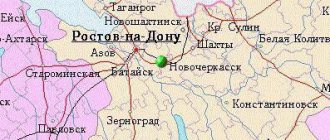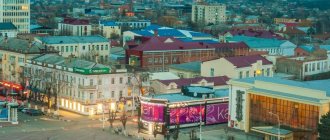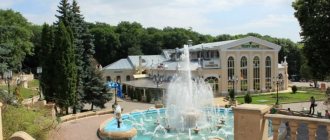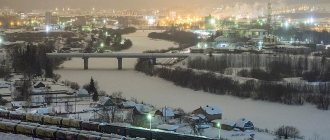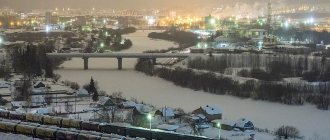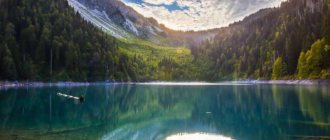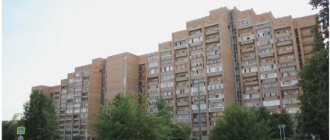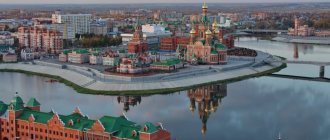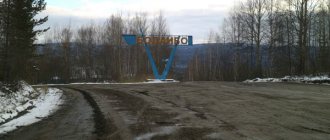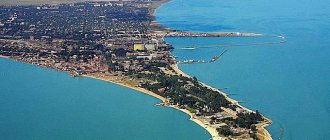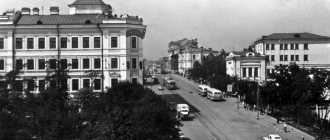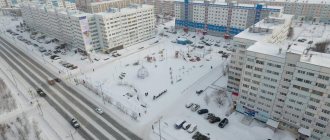If you are looking for a resort town, inexpensive accommodation, food, and a rich excursion program, then the capital of Abkhazia is what you need. Sukhumi itself is a landmark of Abkhazia. Holidays in Sukhumi are suitable for all age groups of tourists: youth, teenagers, children, couples, even the elderly.
Sukhumi lives a more active life than Pitsunda. There are plenty of interesting places and attractions that are worth visiting. There are entertainment options to suit every taste and budget. Read more on our website bungary.ru
Sukhumi is the capital of Abkhazia*
Sukhumi is the capital of Abkhazia, now known as Sukhum. After the armed conflict, this republic was recognized by only 4 states - Russia, Venezuela, Nicaragua and Nauru. The UN recognizes Abkhazia as the territory of Georgia. According to the territorial division of the country, it is the Autonomous Republic of Abkhazia.
In 1992, the capital of the republic was renamed Sukhum, but the former name is considered legal and continues to be used frequently.
Location and climate
Abkhazia is located in the north-west of the Main Caucasus Range. Sukhumi is the central part of the republic and is located 107 km from the Russian border. The city is located on the Black Sea coast in Sukhumi Bay.
There are 3 rivers flowing through Sukhumi: Basla, Sukhumka and Kyalasur, the latter is the border of the city in the south.
The highest point of the city is Sukhumi Mountain, 201 meters above sea level. This mountain has two peaks, on one of them there is a television tower. There are also the Trapezium and Bagrata mountains.
The relief of Abkhazia is represented by high mountains and lowlands on the Black Sea coast.
The climate of this region is determined by its geographical location and topography. Situated in a lowland, Sukhumi is characterized by a humid subtropical climate. Winters here are warm and mild, temperatures up to +8 degrees Celsius. The average summer temperature is from +23 to +25 degrees. The water in the sea warms up to +30 degrees. In summer the weather is ideal for a beach holiday.
City structure
Sukhumi has a very long history, it is more than 2500 years old.
According to legend, the ancestor of Sukhumi was the ancient Greek city of Dioscuria, which after 500 years of existence disappeared under the waters of the Black Sea.
This city is interesting for historical and health tourism. On the territory of Sukhumi there are historical architectural monuments of different periods; there are also a very large number of boarding houses and health centers in Sukhumi, since the climate is suitable for the treatment of respiratory and heart diseases.
The city's infrastructure is represented by numerous hotels, boarding houses, and holiday homes.
Sukhumi is the cultural center of Abkhazia. There are universities and institutes, museums, theaters and other scientific and cultural institutions here.
The center of Sukhumi is considered to be the part of the city by the sea, and the main street is the embankment. On this street is the residence of the President of Abkhazia and the Abkhaz State Drama Theater.
Then this embankment turns into another street - the Dioskouri embankment.
There are beaches along the entire coast of Sukhumi. Here, as on the entire Black Sea coast of Georgia, the beaches are made of small pebbles, sometimes mixed with sand. All beaches are free, regardless of whether they are city beaches or belong to a hotel or holiday home.
Sukhumi has a large Central Market, where you can find all the necessary goods - from food to clothing, dishes, souvenirs, etc. There is a particularly large selection of spices.
Other places to visit in Abkhazia
LAKE RITSA
This mountain lake is 2.5 hours drive from Sukhum. The lake area looks very beautiful, and on one side there is Stalin's former rest house, which you can enter. There is no public transport to the lake, so the only option is to take a tour (in Russian). They can be organized with one of the many tour operators located on the Sukhum embankment.
GAGRA
Gagra is a small seaside town located further along the coast from Sukhum. It is supposed to be beautiful here, and the beaches are a little quieter than Sukhum. Regular minibuses run here from the Sukhum bus station.
Sights of Sukhumi with photos
The most famous and ancient architectural monument in Sukhumi is the Sukhumi Fortress, you can see the photo below. It was built by the Romans and called “Sebastopolis”, which means “Holy City”. Today, only ruins remain of the fortress, which symbolize the history of the city.
Among the significant architectural monuments one can also highlight the Great Abkhaz Wall . It was erected during the Byzantine period of history. The wall stretched 160 km in length and consisted of small towers 8-12 m high. Now ruins remain of the wall, but some towers are well preserved.
Moving on to an overview of the sights of modern Sukhumi, first of all I would like to highlight the Botanical Garden . It occupies a leading place among arboretums around the world. It contains plants from subtropical regions around the world. The garden contains more than 5,000 varieties and varieties of plants. The main exhibit is the Caucasian linden tree, which is more than 250 years old.
An amazing place that was once world famous is the Research Institute of Experimental Pathology and Therapy of the Academy of Sciences of Abkhazia, known as the Monkey Nursery , which is located on Mount Trapezium. There are more than 300 individuals of various monkey species from Africa, Asia and South America.
On the territory of the institute you can visit the primatological museum; there is also a monument to a monkey erected here.
The attractions of the resort Sukhumi are the Makhadzhirov embankment and the Dioskouri embankment . One embankment smoothly transitions into another, in fact it is one embankment, they are even paved with the same masonry.
The embankments are the main recreational area for city residents and vacationers. From here you have an excellent view of the sea, and on the other side of the embankment there are old colorful buildings. The atmosphere is complemented by exotic plants that grow on the embankment.
Milestones of history
Despite its advanced age, almost no ancient buildings have survived in Sukhum. To get an idea of the city's distant past, you can visit the Abkhaz State Museum. It is located 150 meters from the famous Sukhumi Botanical Garden. The museum opened in 1917 and today has a collection of 100 thousand items. Some exhibits have world value. There are rarities that are 50 million years old! In the park near the museum you can see a real dolmen.
Dolmen
Near the port on the seashore, fragments of the walls of a medieval fortress have been preserved. Once their thickness reached two meters. Inside there were houses for officers, a church and even a marble fountain. The citadel was destroyed during the Russian-Turkish war. The buildings were looted, and the Turks took the entire fountain away. At the beginning of the 20th century, the fortress was used as a prison. Revolutionary Sergo Ordzhonikidze served his sentence here. Now all that remains of the fortress are ruins.
Another evidence of the ancient age of Sukhum is Bagrat Castle, which formerly bore the name Akua. The ruins of stone walls rise on a mountain in the northeastern part of the city. It was erected in the 10th century. In plan, the building had the shape of an ellipse. The castle stands on the edge of a cliff, which served as a natural defense against attack. The height of the walls reached 12 meters, and the width reached two. The fortress protected the approaches to the southern part of the Abkhazian kingdom. On the territory of the castle, archaeologists found many ancient artifacts - coins, jewelry, dishes.
Ancient water conduit
Like China, Abkhazia has its own Great Wall. The stone fortress stretches 160 kilometers from the Kelasur River to the mouth of the Inguri River! There were several hundred towers on it alone. Each tower was up to 12 meters high and was a mini-fortress. The wall was most likely built by the Persians in the second half of the Sixth Century. Nowadays, rare ruins remain from the grandiose fortification structure. Fragments of an ancient tower can be seen five kilometers from Sukhum, near the mouth of the Kelasur River.
The Besletsky Bridge is worthy of attention. It is also called the Queen Tamara Bridge. The stone arch over the Baslu River near Sukhum was erected in the 11th century. Her age is about a thousand years! The length of the unusual engineering structure reaches 35 meters. The road from the sea to the mountains went through the bridge. It was of strategic importance and was under 24-hour security. On the shore there are ruins of a watchtower. Despite its external fragility, the bridge can still bear a load of up to eight tons! Behind it begins a picturesque river gorge, rich in beautiful places.
Past and present
To get an idea of the modern history of Abkhazia, it is worth visiting the Museum of Military Glory named after Vladislav Ardzinba, the first president of the republic. It was opened in 2014 and is dedicated to the Lat tragedy. The exhibition tells about the events of the 1992-1993 war. One room is dedicated to the Great Patriotic War. The Glory Park serves as a unique addition to the museum exhibition. It is located in the city center between Aiaaira Avenue and Lakoba Street.
Transport
You can get to Sukhumi by bus, train and plane. Unfortunately, all of these methods are illegal. The only correct way to legally enter Abkhazia is to cross the bridge over the Inguri, arriving in the Georgian town of Zugdidi. You must cross the bridge on foot or in a paid carriage. To “legally” enter Abkhazia you need to obtain a “visa” from the de facto authorities of Abkhazia. You can request and receive a visa online. On the other side of the bridge, in territory not controlled by Georgia, you can take a minibus or hire a taxi and get to any place in Abkhazia.
As for public urban transport, trolleybuses and minibuses operate in Sukhumi. There are only three trolleybus routes in Sukhumi.
Accordingly, by visiting these territories from the Russian side, you are breaking the law. This leads to a fine of 400-800 GEL and other troubles.
If you have a stamp in your passport about visiting these territories, it is better not to go to Georgia with this document.
If you want to visit Abkhazia or Ossetia legally, do it from the Georgian side. Get official permission and there will be no problems. Read more about this on the website of the Georgian Ministry of Foreign Affairs: www.mfa.gov.ge
Hotels and boarding houses
After the war, the resort and tourist area of Sukhumi suffered quite a lot. Many of the hotels and boarding houses have closed and are not functioning.
However, everything is gradually beginning to recover; the restored Ritsa Hotel has opened in the city center on the embankment, and several modern mini-hotels have also been built.
There are also some health resorts based on Sukhumi mineral springs.
If you need a budget holiday, it won’t be difficult to rent a room in the private sector.
Despite recent events in Abkhazia, Sukhumi remains an attractive tourist city for low-cost tourism. True, there is no trace of any serious tourism infrastructure in Abkhazia, although most of the local population lives off tourism.
Source
City of Sukhum
Sukhum is the capital of Abkhazia. The city dates back to the 6th century BC, making it one of the oldest in the world. At that time, on the site of the local settlement of Akua, Greek merchants founded the colony of Dioscuria, which later became a major trade and economic center. Then the Romans came and, having destroyed Dioscuria, founded their fortress of Sebastopolis. Many centuries later, the Arabs swept across the lands of the future Sukhum, giving the settlement the name Tskhum. Afterwards the Turks renamed it Sukhum-Kale, which means “fortress of water and sand.”
Save on your trip to Sukhum!
Video: Sukhum
Basic moments
Sukhum is the Russified name of the city, which it received with the annexation of the Caucasus to the Russian Empire. It is interesting that the Abkhazians themselves call the capital of their country Akua.
Mineral springs and healing air of Sukhum will improve your health, and yellow sand and turquoise sea will relax your body and soul. The city is surrounded by greenery, and it is impossible to take your eyes off the snow-white architectural monuments.
Climate and weather
Sukhum is located in a convenient location: it is open to the warm sea and protected from the wind, which creates a special climate. The hot weather lasts until the end of October, winter is warm and mild. Summer in Sukhum lasts 7–8 months, the sun shines here 220 days a year.
In July and August in the capital of Abkhazia, the air warms up to +26…+30 °C, sometimes up to +35 °C. From such heat the sea becomes warm like fresh milk - +24...+30 °C. In autumn, the weather becomes more pleasant: the air temperature drops to +20...+25 °C, and the sea remains warm - +23...+26 °C.
In winter, the air temperature does not fall below 0 °C and averages +8...+14 °C. The sea freezes only on very cold nights.
The rainiest months are November, December and January. At this time, there is twice as much rainfall as during the entire summer.
Sukhum is good at any time of the year, but it is best to come here from late summer to mid-autumn - at this time the weather here is soft and comfortable, fruits and vegetables are plentiful, prices for housing and service are low, and there are very few tourists.
Nature
The nature of Sukhum is so beautiful and pure that, after relaxing here, all tourists note a surge of strength. Here you can feel vital energy in everything: in the clear sea, rich greenery, bright sun.
The capital is located on the shore of Sukhumi Bay, protected from the north by mountain peaks. Sukhum is surrounded by the Kelasur and Gumista rivers; Two rivers, Basla and Sukhumka, flow through the city. By the way, since 1955, medicinal thermal mineral water saturated with nitrogen has been produced in the Basla River valley.
Abkhaz Institute for Humanitarian Studies named after D.I. Gulia
Mount Sukhumskaya (Samata) rises above the capital at an altitude of 201 meters, from which there is an excellent view of Sukhumi Bay, the city and the mountain ranges. The road up the mountain is not easy and constantly winds, but all this pales in comparison to the interesting historical places near which it passes.
Not far from the city is Mount Trapezium (Hathua). It is famous for the fact that the great Russian scientist Alexei Ostroumov purchased a plot of land on its slope and planted a garden here, and Chekhov, while visiting the scientist, admired this “unique and poetic place.” Since 1902, a city hospital has been operating on this mountain.
Forests on the mountain slopes are a favorite place for tourists and local residents to relax.
The entire capital and its surroundings are surrounded by greenery and flowers. Cypress trees, palm trees, Himalayan cedars, thujas, feijoas, and tangerines grow in the city.
The forests of Sukhum are inhabited by wild cats, raccoons, squirrels, deer, and fallow deer. The local rivers are favored by trout and pike perch, muskrats and nutria. Dolphins and stingrays, perches and mullet, seahorses and crabs splash in the sea.
Residents of Sukhum carefully monitor the state of the environment and try to preserve natural heritage.
Sukhumi Fortress Railway Station Building
Attractions
Sukhum has its own exquisite picturesque embankment - the Makhadzhirov embankment. It was built at the end of the 19th - beginning of the 20th centuries. Another embankment that frames the Black Sea coast is the Dioskouri embankment. Both of them are surrounded by ancient houses and cultural monuments.
In the center of the capital is the oldest monument in the country - the Sukhumi Fortress, founded in the 2nd century AD.
Entrance to the botanical garden Annunciation Cathedral
Sukhum is a city of several faiths; there are many temples, ancient and modern, of various religions. We recommend that you definitely visit the Kaman Orthodox Church of the 10th–12th centuries and the Cathedral of the Annunciation, the Lutheran Church, the Polish Church, and the synagogue.
Not far from the sea there is a beautiful Theater Square with the Abkhaz State Drama Theater and exhibition hall.
One of the most beautiful streets of Sukhum - Leon Avenue - connects the sea and Mount Trapezium. This street is a real open-air museum. It houses the Philharmonic, a botanical garden, and a famous monkey nursery.
Roman Catholic Church of St. Apostle Simon the Canaanite General Prosecutor's Office of the Republic of Abkhazia
The Sukhum Botanical Garden is known far beyond the city. It was founded back in 1840, since then thousands of tourists visit it every year. Here you can see a collection of plants that is stunning in size and beauty. The main attraction of the garden is a 250-year-old Caucasian linden tree.
The monkey nursery is home to 300 monkeys from Africa, South America, and Asia. The nursery houses a primate museum and the world's only monument to a monkey.
In the picturesque surroundings of the capital there are a large number of interesting cultural monuments: the Besletsky Bridge over the Baslu River, Bagrat Castle, the Sukhumi lighthouse made in France.
Residence of the government and the President of the Republic of Abkhazia Lenin Park
Nutrition
In Sukhum there are also establishments serving dishes of other cuisines: European restaurants “Atrium Victoria”, “San Remo”, “Medovik”, Chinese restaurant “Yin-Yang”.
Colonnade Russian Drama Theater
Accommodation
You can stay in Sukhumi in sanatoriums, holiday homes, boarding houses, mini-hotels and inns. The city also has developed rentals of rooms, apartments and houses for any period of time. Many places to stay are located close to the main attractions - the botanical garden, monkey nursery, Leon street, embankments.
More recently, mini-hotels have begun to appear, which in terms of quality of service are no worse than holiday homes, sanatoriums and boarding houses. As a rule, each room has a TV, as well as a toilet and shower. Almost all hotels are equipped with recreation areas for children and adults.
Hotel "Ritsa". Built in 1914.
Holiday homes offer four categories of rooms: economy double one-room; economy triple one-room; standard double one-room with a balcony, TV, refrigerator and fan; standard family two-room with balcony, TV, refrigerator, fan. Economy rooms have a toilet and sink; Shower room and refrigerator are shared on the floor. The “standard” option also includes a shower in the room.
Many sanatoriums and boarding houses in Sukhum have been preserved from the times of the Soviet Union. Many have undergone modern renovations and offer therapeutic and rejuvenating procedures. True, they are far from the spa hotels of foreign resorts.
Entertainment and relaxation
Sukhum is a city surrounded by the sea, rivers and mountains. Therefore, recreation here is very diverse.
Pebble and sandy beaches stretch for 10 kilometers along Sukhumi. In the city center they are well landscaped: embankments, sun loungers, cafes, attractions; You can also rent catamarans, jet skis, and air mattresses here. Far from the center there are wild beaches, they are spacious and uncrowded.
The sea is clean and warm in almost any weather. Tourists are invited to admire the underwater world and look at the ancient city of Dioscuria, which was swallowed up by the sea more than 2000 years ago. You can take a boat ride, swim in clear water far from the shore and taste national dishes right on board, enjoying the clean air and a beautiful sunset.
You can see beautiful views and visit amazing places by climbing the mountains - on your own or on horseback.
In Sukhum, eco-tourism is becoming popular with exciting trips and adventures that will allow you to get to know the city, get acquainted with its history, culture, sights, and enjoy its nature. The most popular type of recreation is cycling. You can ride bicycles all year round.
Fans of night parties and clubs will be disappointed: there are almost none in Sukhumi. There are a couple of clubs that are open at night, but they are small and not very popular.
In the city you can go to the theater, 3D cinema, billiards clubs or improve your health in sports and fitness centers.
Purchases
There are no boutiques or shopping centers, large grocery stores or hypermarkets in the capital. Private business and sales from personal yards predominate here. There is a very large market in Sukhum, where people from all cities of Abkhazia come to shop. The market has a great selection of homemade products (cottage cheese, cheese, vegetables, herbs, fruits, spices, wine and chacha, honey), clothing and other goods.
There are many souvenir shops in the city where you can buy boxwood jewelry, souvenir knives, carpets, clothes, textiles, sea salt, medicinal herbs, tea, coffee.
Transport
Sukhum is served by a railway station, a seaport, buses and trolleybuses.
The capital is connected by rail to other cities of the country (right up to the border with Russia), as well as to Moscow and Adler. Ships from Russian Black Sea cities arrive at the port of Sukhum.
The only airport in the republic, Babushara, is located not far from the city. It is actively used for flights by top officials of Abkhazia and Russia and regular flights to the village of Pskhu (checkpoint on the border of Russia and Abkhazia).
There is a taxi service in Sukhum. Check the cost of the trip in advance.
You cannot rent a car in the city: there are no rental offices. If you come by car, then moving around the city will not be difficult: it is all divided into “honeycombs” and it is difficult to get lost in it.
Connection
Safety
Tourists note that they feel quite safe in Sukhum. However, it is worth keeping money and valuables in a safe here and avoiding dark alleys. Do not leave your vehicle unattended. At night, it is best to park it in a paid parking lot or in the parking lot of a hotel or boarding house. Be careful when crossing the road: traffic rules are hardly enforced.
Business climate
Business centers in Sukhum meet all modern standards, are guarded, equipped with conference rooms, and have Internet access.
Exhibitions are held in the capital of Abkhazia. The Abkhaz resort forum “Hospitality Industry” presents a full range of goods and services for hotels, restaurants, cafes, and holiday homes. Another significant exhibition in Sukhum is the international construction and interior exhibition “Construction and Design”. The events are organized at the exhibition site in the city center on Leon Avenue.
Real estate
The price of a property depends on its distance from the sea and from the center.
Tips for tourists
Negotiate all prices in advance, be it a taxi ride, excursion or accommodation in the private sector. Don't be afraid to bargain at the market.
In Sukhum, it is not customary to appear on the street in swimsuits. Local men prefer not to walk “in public” even in shorts, but only swim in them in the sea. Women in Sukhum still consider open knees to be the height of indecency.
On the street, in public places, it is not customary to openly express your feelings and emotions (kissing, hugging).
Source
We walk around the center
As befits a seaside city, Sukhum has a promenade. The hallmark of the embankment is the majestic colonnade. In the center there is an arch that serves as a passage to the sea. A monumental structure in a neoclassical style appeared on the shore in 1948. From here you can clearly see the Sukhumi port.
Now this is the Makhadzhirov embankment, and at the beginning of the last century it was Mikhailovskaya. Three times a week a military brass band played on the shore. Guidebooks of that time claim that it was all dotted with coffee shops and restaurants. The tables were right on the sidewalks under the palm trees. Behind them sat groups of men playing chess, backgammon and dominoes. The most amazing thing is that the same picture can be seen now! Everything changes except people's habits.
This picture could have been seen on the embankment 100 years ago.
Coffee shop No. 1, popularly nicknamed “Brekhalovka,” was extremely popular. Politicians and businessmen gathered here. Deals were made over a cup of coffee. Women didn't come here. The cafe with the same name is still operating today! It is located near the colonnade. But women are no longer prohibited from entering.
After a walk along the embankment and a visit to a coffee shop, you can get to know the city center. Fortunately, all iconic places are located within walking distance. Directly behind the colonnade is Theater Square, which houses three temples of art - the Drama Theater named after. S. Chanba, Russian Drama Theater and Art Gallery.
Sculptural composition near the Drama Theater
On Teatralnaya Square your attention will certainly be attracted by an unusual fountain. Adjacent to the drama theater is the ancient building of the Ritsa Hotel, built in 1914. From an architectural point of view, the building of the ancient Oriental Hotel is also interesting. It is located on Leon Avenue, opposite Ritsa.
To the right of the Drama Theater is the government quarter. It includes the Presidential Administration and the Cabinet of Ministers. The building is surrounded on three sides by green areas. On the left is the park named after. B. Shinkuba, in which there is a monument to the national poet Bagrat Shinkuba. The park also contains the buildings of the Academy of Sciences and the Folk Song and Dance Ensemble of Abkhazia. On the right is a square with a monument to victims of political repression. The government fences off the Eucalyptus Park from the sea, where a monument to the Mukhajirs is erected - this is the name given to the victims of the Caucasian War of the 19th century.
Leon Avenue
It is worth taking a walk along the Mahadzhirov embankment towards the port. Along the way you will see several funny sculptures - “Old Tachkum”, “Nika”, “Chick and the Chicken”, “Penguin Philosopher”. You can tell from their shiny noses that they serve as talismans. All you have to do is make a wish and rub your nose. They also leave a coin for the penguin on the table. The traditional location for a photo shoot is the “YeSUKHUM” composition. It is installed in the background of the port.
The 37-meter-high Sukhumi Lighthouse is considered an engineering landmark. In 1861, it was made in France, transported to Sukhum and installed on a cape jutting out into the sea. It took 150 days to assemble the giant. A spiral staircase with 137 steps leads upstairs. The lighthouse has been operating for almost 160 years!
Sukhum
This section contains articles about the city of Sukhum and its surroundings
Sukhumi or Sukhum is the capital of the independent state of Abkhazia, the largest city of what was once one of the most popular and beloved resort areas of the Black Sea coast of the Caucasus.
Back in the 4th century BC. on the site of the modern city there was a thriving colony of Dioscurias, then the Roman fortress of Sibastopolis. After the Romans, the Byzantines, Genoese and Turks lived here. Before the Russian-Turkish War, the city was ruled by Abkhazian feudal lords.
Abkhazia became part of Russia at the request of the Abkhaz prince Keleshbey Shervashidze-Chachba. This was in 1810.
Sukhum is located on the shore of the large Sukhumi Bay. The city is 107 kilometers from the border with Russia, and 125 from Adler.
Competitor to Rome and Istanbul
Archaeological finds on the territory of the modern city indicate that people lived here 300 thousand years ago! Scientists call this period the Lower Paleolithic. It dates back to the ancient Stone Age. The history of the city itself goes back 2,500 years. Rome, Syracuse, and Istanbul can boast of this age.
In the Sixth century BC, the Greeks settled on the seashore at the foot of three mountains. They founded the colony of Dioscuria, naming it in honor of the Dioscuri brothers, who were participants in the Argonauts' campaign to Colchis. The settlement played the role of a transit point for trade with the North Caucasus, where about 70 peoples lived.
Archaeological finds
The Greeks were replaced by the Romans, who built the fortress of Sebastopolis. Its walls stood for almost two centuries. Subsequently, the fortress was captured by the Byzantines. Under them, the city flourished until the Arabs attacked. They were unable to gain a foothold on the coast, but managed to pretty much destroy the city. In 736 the settlement was known as Tskhum. Then it was part of the Abkhazian kingdom, which later came under Georgian jurisdiction.
After a century of calm, the Genoese moved to the coast. Under them, the city became an important port. However, in the 16th century the Turks were already in charge here. Having captured the city, they renamed it Sukhum-Kale. Only at the end of the 18th century did the Abkhazians manage to recapture the fortress. The Prince of Abkhazia moved his residence here. In 1810, an agreement was signed on the entry of Abkhazia into Russia.
Even souvenirs testify to the ancient age of the city
In the 19th century, Sukhum became a popular seaside and medical resort. In 1861, Emperor Alexander II came here on board the yacht Livadia. After the revolution, the resort was chosen by the creative intelligentsia. Chekhov, Paustovsky, Gorky, Yesenin rested here. Sukhum was recognized as the best resort for the treatment of pulmonary diseases. Treatment was successfully combined with entertainment. Restaurants “Paris”, “Birzha”, and the confectionery “Hollandia” appeared in the city. The name Sukhumi has become synonymous with a beautiful life.
The parliament building was damaged during the Georgian-Abkhaz war
The resort was a popular holiday destination before the Georgian-Abkhaz conflict, which occurred in the early 90s. The city was badly damaged during the fighting. Many sanatoriums, hotels, and holiday homes were destroyed. After the war, the population of the republic was reduced by half. The number of residents of the capital has also decreased. Only in 1994 was a truce signed. Tourists actively traveled to the republic at the end of the 2000s.
How to get there
Moscow is the only city in Russia from which you can take a direct train to Sukhumi.
True, on the Ministry of Railways website you can see information about the absence of railway communication between Moscow and Sukhumi. But there is such a train. The train covers the distance to Sukhumi in 41 hours 43 minutes. The train schedule depends on the season. For example, in December, trains depart from Moscow every 2-3 days. The cost of a ticket in a reserved seat carriage is 3040 rubles, in a compartment carriage 5393 rubles.
From other cities of Russia you can get: to Adler, and then by train or bus to Sukhumi. Electric trains between Sochi and Sukhumi run twice a day. Ticket price is 220 rubles. Travel time is 4 hours.
You can get from Sochi, Adler to Sukhumi by minibuses. It’s also cheaper - the ticket costs 150 rubles, and twice as fast. The journey takes only 2 hours.
A regular bus runs from Sochi to Sukhumi once a day. Ticket price 220 rubles.
There is an airport from Abkhazia. In Soviet times, you could fly by plane from Moscow and some other cities.
Today there are no direct flights with Abkhazia. The airport serves only aircraft of the UN Mission and Russian peacekeepers. The nearest airport is in Adler. From the airport to the border of Abkhazia, the Psou checkpoint is 8 kilometers, which can be covered by bus.
Of course, the most comfortable transport is a taxi, the prices of which are quite reasonable. The price for a 4-seater car from Adler to Sukhumi is 4,000 rubles.
Only the car should be ordered in advance by phone: +7-926-0983003.
Using the services of taxi drivers offering their services directly at Adler airport will lead to unnecessary costs and hassle.
Optional
Sukhum can be called the cultural capital of Abkhazia. Local residents will certainly recommend you to visit the Gulia House Museum. It is located on Gulia Street near Freedom Park. Abkhazians consider Dmitry and George Gulia to be their Cyril and Methodius. The first gave writing and opened a mobile theater on carts. The second is considered the patriarch of Abkhaz literature. There is a monument to Dmitry Gulia in Sukhum.
Monument to Dmitry Gulia
There are several temples in the city. The main Orthodox shrine is the Annunciation Cathedral. It was built just before the revolution and consecrated in 1915 in honor of St. Nicholas the Wonderworker. Later it was consecrated in honor of the Annunciation of the Blessed Virgin Mary, leaving the chapel of St. Nicholas. Until 1990, the tomb of John Chrysostom was kept in the cathedral. Then she was transferred to a monastery in the village of Koman near Sukhum. The capital is home to one of two mosques that operate in Abkhazia.
Memory of Abkhazia
If time permits, it is worth visiting the sulfur thermal springs. They are located five kilometers from the Red Bridge on the road to the Besletsky Bridge. Even the ancient Romans built baths and baths here. They were designated on maps as “Happy Springs.” In Soviet times, there was a balneological hospital here. It was destroyed during the war.
Climate
Sukhumi's humid subtropical climate, with high rainfall mainly in winter, is liked by many tourists who tolerate the humid heat well.
Despite the abundance of rain even in summer, there are many sunny days a year - 250. The air temperature in Sukhumi is higher than on the Caucasus coast from Sochi to Gelendzhik, the warm season is longer and lasts as much as 6 months from April to September, when the average air temperature is 16 , 19, 23, 25, 26, 23 degrees, respectively.
The water in the Black Sea is also warmer, it heats up earlier and cools down later. In May you can already swim; this month the water temperature is 18 degrees. In September it is still warm and comfortable for swimming, 23 degrees.
But in a particular year, the temperature may differ from the average temperature: in winter there may be short-term frosts and snowfalls, and in the summer months, especially in the hottest of them, August, the air can warm up to 29-31 degrees. But sea breezes, so characteristic of the city, reduce humidity and bring coolness.
People who cannot tolerate heat well should pay attention to the presence of air conditioning in their hotel room or rented premises.
Where to stay
Sukhumi, like the whole of Abkhazia, has still not recovered from the long-term military conflict with Georgia, which lasted from 1992 to 2008, with some interruptions.
During this time, half of the country's population left Abkhazia. Tourists have not come here on vacation for a long time. The consequences of this conflict are still felt today: numerous sanatoriums and boarding houses are empty, tourists are still wary of traveling to an already completely safe country.
But gradually the resort and tourism infrastructure is being restored. Abkhazia today is one of the cheapest holiday destinations on the Black Sea, which is also a pretty compelling argument.
Among the 19 hotels in Sukhumi, there are no five-star hotels, and four-star hotels may not meet international standards. The hotels were selected based on the highest ratings from tourists.
Free hotel room reservations are made through three popular sites:
Hotel Ritsa
A snow-white three-story building is located in the center of Sukhumi and just 100 meters from the city’s public beach.
This is one of the best hotels in the city. The hotel's rooms have a TV and some rooms have sea and garden views. Tourists are provided with free Wi-Fi. The hotel has 22 rooms, mainly deluxe and super-luxe categories.
The hotel offers excellent opportunities for active recreation, such as horse riding in the surrounding area, diving or hiking.
At the hotel restaurant you can try national Abkhazian dishes and European cuisine.
A double deluxe room will cost 3,900 rubles per day . Breakfast is included in the room rate.
Sukhum 2*
The hotel is located 3 kilometers from the center, on the banks of the Basla River on the Sukhumi embankment, among palm trees and eucalyptus trees.
The hotel rooms have:
The nearest beach is 150 meters away. The magnificent Botanical Garden and Monkey Nursery are just 10 minutes away.
The third floor open terrace offers magnificent views of the river and sea.
Prices for a double room range from 1,740 to 3,720 rubles.
Near the hotel there is the famous restaurant of national cuisine “Ertsakhu”. The hotel has its own boat dock and organizes fishing and river walks.
Hotel Aytar
A modern hotel is located in a beautiful park with decorative ponds.
The hotel has:
The Sukhumi Arboretum, Botanical Garden and Monkey Nursery are very close by. The private pebble beach is only 70 meters away.
The prices are pleasantly surprising: a single room costs 1,100 rubles per day, a double room costs 1,640 rubles. The rooms with sea views have a refrigerator, fan, and TV.
Hotel address: Sukhumi, Kodori highway, 57. Reservation center: 8-800-333-33-49 (toll-free within Russia). Email:
Viva Maria
The hotel is located in the very center of Sukhumi and 1 kilometer from the sea.
The hotel rooms have:
The hotel accepts tourists with pets. There is a free swimming pool for guests.
The price of a double room, depending on the category and season, is 1900-3790 rubles.
Attractions
Sukhumi is not only a resort by the sea. Numerous architectural monuments, parks, and museums make your vacation not only useful, but also interesting.
Abkhazian art gallery
The history of the art gallery of Abkhazia began in 1963.
This year the decision was made to create it. The basis of the gallery's collection was the personal collection of the famous doctor E. Fishkov, who donated 60 paintings. The gallery has become the most important cultural attraction not only in Sukhumi, but throughout Abkhazia.
Many famous artists of Abkhazia such as V. Bubnova, O. Brendel, M. Eshba, H. Avidzba and many others donated their works to the gallery. Copies of the frescoes of the Lykhny Church were made especially for the gallery.
The gallery's collection is constantly growing, despite the great losses it suffered during the Abkhaz-Georgian war. Today, a new building has been allocated for the gallery, which is located on the same street as L. Fischer’s house.
Gallery address: Sukhumi, st. Lakoba, 21.
Annunciation Cathedral
The Annunciation Cathedral is the decoration of the city.
The cathedral was built in the neo-Byzantine style, cruciform in plan, and topped with domes. The construction was financed by the Greek Orthodox community. The cathedral received the status of a cathedral after World War II.
In 2010, for the centennial anniversary of the temple, large-scale renovation work was carried out. Chelyabinsk craftsmen presented the gilded central dome of the cathedral for the anniversary.
The shine of the dome is visible from the sea and sailors of ships in Sukhumi Bay can admire it. It is not uncommon to hear services in the cathedral in four languages: Greek, Old Church Slavonic, Abkhazian and Georgian.
House with a clock
In the center of Sukhumi, many architecturally interesting buildings have been preserved.
One of them, “House with a Clock,” is located in the very center of the city. The building is a hundred years old, it was built specifically for the city administration. In 1950, chimes were installed in the turret on the roof of the building. After this, the house became known as the “House with a Clock.”
The administration is still located here. The building fits organically into the architectural ensemble of the center, which includes the school and the Main Post Office. Nearby is the Park of Glory with a memorial to Abkhazian soldiers. There are many beautiful trees in the park - cypresses, cedars, palms and magnolias.
Address: Sukhumi, st. Abaza, 75
Botanical Garden
People have come to the famous Sukhumi Botanical Garden before, and today tourists come from all over the Caucasus coast.
This is a completely unique garden, one of the oldest botanical gardens in the world. In the humid, hot subtropical climate, trees, shrubs, and plants are planted and grow that you will not see anywhere else in Russia.
The history of the garden began in 1838. One of the garrisons of the Russian army after the victory over the Turks was located in the Sukhum fortress. To improve the soldiers’ diet, the garrison doctor Bagrinovsky began adding vegetables and herbs to the diet, which were used in large quantities as food by the local population.
He planted a large garden of subtropical crops. Abkhazia is still the only place on the territory of the former Union where citrus fruits grow. The history of the botanical garden began with this orchard.
When the son of a hero of the Patriotic War of 1812 became the commandant of the fortress, he achieved the transfer of the garden to the military department.
Thanks to this, the garden area was increased to 30 hectares, on which citrus and olive trees, magnolia and bay trees, tea bushes, bamboo groves, several types of sequoias and many plants from all over the world were planted.
In the garden there is a 300-year-old linden tree, older than the garden itself.
The garden survived all the wars. Today its area is 50 hectares, of which 5 hectares are available to tourists. Over the past 10 years, the garden's collection has expanded significantly. More than 200 species of plants were brought here from the tropical islands of Hokkaido, Taiwan and others.
And it’s also very beautiful here. There are 50 curtains for tourists, among which there are paths. Walking along the shady alleys of the park among rare and unusual plants, flower beds, and artificial ponds is a real pleasure.
Garden address: Sukhumi, Chavchavadze Ave. 20. Phone: +7 (840) 244 58. Ticket price: 180 rubles. Opening hours: 09:00-15:00.
Apery
Sukhumi, with its humid, warm, subtropical climate, is ideally suited for keeping monkeys outdoors.
That is why Sukhumi was chosen to create a monkey nursery, which will soon celebrate its centenary. The surrounding forests contain a lot of plant food suitable for monkeys.
Initially, the nursery was created exclusively as a scientific institution in the 20s of the last century. Later, for economic reasons and due to the great interest of tourists in the nursery, excursions began to be held here, to which people willingly came from afar.
Today, more than 300 monkeys of different species live in the nursery, such as:
The climate here is so good that many monkeys live freely along the banks of the Gumista River. Many medications were tested on the nursery's monkeys, and 12 of the nursery's monkeys flew into space.
Nursery address: Sukhumi, Mount Trapezium. You can get there by minibuses going from the market (Market-Kelasur) to the botanical garden. from the railway station there are 5-6 stops on the minibus towards the center. The nursery is open from 10.00 to 18.00. Phone: , 26-77-56. The entrance ticket price varies depending on the season from 100 to 150 rubles.
Botanical Garden
The second calling card of Sukhum is the Botanical Garden. It appeared on the coast in 1838. At that time there was a Russian military garrison in the city. The doctor Bagrinovsky, who was fond of growing plants, built a small garden near his house. An unusual hobby attracted the attention of Lieutenant General Raevsky, who served as head of the fortified area. He decided to take over the garden for government maintenance. This required permission from Emperor Nicholas I.
The botanical garden is located in the center of Sukhum
Thus, the private garden turned into a government institution called the Sukhum-Kal Military Botanical Garden. After this, the planting area was significantly increased. A tea bush, lemon and orange trees were brought from the Crimean Nikitsky Botanical Garden. The tea bush turned out to be a long-liver - it lived for more than a hundred years! In addition to exotics, traditional fruits and vegetables were grown. They went into the officers' rations.
Guests from America
The garden changed significantly when the famous gardener P. Tatarinov was appointed its director in 1894. He founded an experimental station in Sukhum and went to South America, from where he brought seeds of dozens of species of agaves, palm trees and other subtropical plants. After this, the Sukhumi garrison “vegetable garden” turned into a classic botanical garden. Here you could see plants from different parts of the planet.
Bamboo Grove
During the Soviet period, more than 5 thousand species of plants grew in the garden! The pride was the magnificent collection of palm trees. The attention of visitors was invariably attracted by the Rose of Banks vine, which, like a snake, wrapped itself around the trunk of a palm tree, rising to a height of 30 meters. The collection of magnolias had a great effect on visitors. The botanical garden was badly damaged during the Georgian-Abkhaz conflict. Hundreds of shells exploded across the park.
The age of the linden tree has exceeded 350 years
Now the Botanical Garden has been put in order. Tourists specially come to see with their own eyes the linden tree, whose age has exceeded 350 years. She was born when there was no garden yet! The Turks tried to cut down the tree; a hurricane almost broke it, but the linden survived. The diameter of its trunk exceeds three meters! The bamboo grove and old sequoia, which were planted in the garden in 1848, are very beautiful. There is a Peace Tree in the park. He was imprisoned in 2010 as a sign of friendship between Abkhazia and Russia.
Beaches
The beach strip of Sukhumi stretches for 12 kilometers.
There are few vacationers even in summer and you can enjoy the sea, well-equipped or “wild” beaches. Sinop Beach stretches along the sea for 2 kilometers. This beach is the most popular in the city, and for good reason. The descent into the water is gentle, fine clean sand, developed infrastructure - everything is conducive to a relaxing holiday, even with small children.
A sun lounger, umbrella, and air mattress can be rented. There are showers and changing rooms. There is a volleyball court and a cafe. Entrance to the beach is free.
Central
Sukhumi city beach is located in the very center of the city. This is a wide pebble beach, perfectly equipped for relaxation. Numerous breakwaters protect the swimming area from large waves. For vacationers there are catamarans, water attractions and cafes. Entrance to the beach is free.
"Aitar"
In the western part of the city, next to the Aitar hotel, there is this pebble beach. The hotel is small and there are not many people here. The beach is free.
"Gumista"
Fans of “wild” beaches, untouched by civilization, will really like this sand and pebble beach. Lovers of silence and solitude - this is the place for you. Sea, sun, deserted shore - what else is needed for complete happiness.
Mayak Beach
This beach is located 4 kilometers from the city center. The beach is pebbly and well equipped. The main attraction of the beach are dolphins, which quite often swim into the beach area.
Entertainment in Sukhumi
There are few nightclubs and discos in Sukhum, but several existing ones will delight visitors with good cuisine, reasonable prices, and interesting entertainment programs.
Restaurant – club “DEM”
One of the best restaurants in Sukhumi, “DEM”, operates as a night club, around the clock.
"DEM" is located in the city center and just 400 meters from the sea. The restaurant has a beautiful interior, excellent cuisine, and a bar with a huge selection of drinks. The restaurant has its own cellar with a large selection of wines. DJs who work in the restaurant will make the night's entertainment fun and varied.
There are constantly promotions and discounts, which makes this establishment quite elite, budget and affordable.
Only persons over 18 years of age are allowed . That's why the restaurant hosts fashion and lingerie shows.
The restaurant has 4 rooms, which makes it possible to choose the style of relaxation and divide visitors by interests. You can sit in a room where the music is not blaring, in silence and in a romantic atmosphere, or you can “have a blast” to the music. The dance floor opens onto an outdoor terrace where laser shows, foam parties and bubbles are held.
Restaurant phone number:.
Entertaining
The entertainment center is located on the city embankment. This is one of the best leisure places in Sukhum.
The three-story modern building has:
The club has a dance floor, billiards, and slot machines. Themed parties are often held.
Night karaoke bar "Space"
This nightclub is a great place to celebrate birthdays and corporate parties.
Wonderful holiday traditions, a variety of show programs, the work of professional DJs and an excellent professional karaoke system create a wonderful environment for relaxation and fun.
The cuisine is national and European, a large selection of cocktails.
The club is open from Thursday to Sunday from 20.00 to 5.00. Club address: Sukhumi, Kodorskoe highway.
Sports and entertainment club “OLIMPIA CLUB”
There is no concept or ideology in this amazing club. A territory of freedom where any kind of entertainment is possible.
Incendiary music and beautiful lighting create a wonderful mood. The club has a cafe, bar, billiards, bowling and slot machines. Discos are often held.
Address: Sukhumi, st. Abaza, 74.
WHERE TO EAT IN SUKHUMI
Taverna Hait - Great food and beer. The staff spoke some English, good Wi-Fi.
Narta is an extremely popular waterfront spot serving local cuisine. The staff doesn't speak English and isn't very friendly, but the food is good and affordable.
I can’t remember the name, look at the map - really tasty Turkish grilled kebabs, lamajun and pide. It's easy to point to what you want, the staff is very friendly, you can sit in the small garden on the waterfront.
